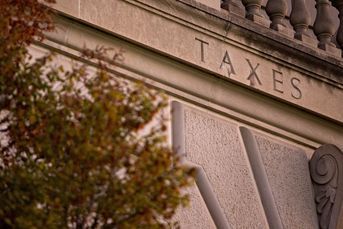Revamping portfolios with risk-smart, tax-smart building blocks

Investors are painfully aware their retirement plans need a do-over. Here's the best approach
With so much uncertainty at every turn, we asked top advisers how they are helping investors rebuild their portfolios. We learned they’re laying a solid foundation based on the elements under their control: the management of risk and taxes. Matching tax-smart asset location and the appropriate risks are the fundamental rebuilding blocks to smart-household management, better long-term outcomes, and more settled and successful clients.
WHAT IS SMART HOUSEHOLDING?
As investment costs continue to spiral down, the only way to improve investor outcomes and quantify the enhanced value an adviser brings is by managing risk and reducing taxes for the full household portfolio.
When we talk about smart householding, we mean the management of a portfolio of investments and protection products that:
- Are held in different account types.
- Are managed in a coordinated way that optimizes risk and tax.
- Improve financial outcomes.
- Quantify the benefits in dollars and cents.
Broadly speaking, we’ve observed five crucial steps to organize client portfolios with smart householding in mind.
1. CREATE AN AGGREGATED VIEW OF A CLIENT’S ACCOUNT
Account aggregation is a cornerstone to providing comprehensive guidance to investors. But if you only look at the data without taking optimal actions, what’s the point? With a smart-household approach, advisers consider and implement all holdings as part of a risk-smart, tax-smart management strategy. That includes quantifying the benefit to the investor.
2. PERFORM A RISK AND TAX-EFFICIENCY AUDIT
An audit starts with an analysis of the investor’s risk tolerance and the misalignment recent markets have caused. Once you know where the client’s assets have scattered, you can clarify their objectives and chart a path to better outcomes. Taxes are the single largest cost to an investor, so it’s vitally important to locate assets optimally to improve results.
3. IMPLEMENT TAX-SMART ASSET LOCATION CONSISTENT WITH THE CLIENT’S RISK TOLERANCE
Tax-smart asset location is achieved by placing tax-efficient assets in taxable accounts, while moving tax-inefficient assets into tax-qualified accounts. Always start by maintaining the target risk and asset allocation, and then locate assets in the accounts that cause the least amount of tax drag. As the saying goes, “it’s not what you make, it’s what you keep.” Risk-smart, tax-smart asset location helps you keep more, a lot more, and produces improved after-tax outcomes for both advisers and investors.
4. EXPLAIN YOUR METHODS AND PROJECTED IMPROVED OUTCOMES
Organizing your client’s assets for tax efficiency is only half the battle. Now you have to explain the value of smart householding to the client in a way that spotlights its value. This is where the emerging trend of scoring systems truly shines.
Riskalyze and BlackRock’s Aladdin are two of the leading risk assessment tools employing this method. At LifeYield, we created the Taxficient Score® to assess tax efficiency, similar to a FICO score. Showing the enhanced value of a client’s portfolio in concrete terms, over 10, 15 and 20 years validates your work and shows clients that they’re headed in the right direction and regaining lost ground. You can demonstrate the benefits of reducing taxes and meeting their risk target as more assets grow and compound because fewer assets are leaving to pay taxes. Top advisers report this approach results in higher retention and increased referrals and revenues.
5. OFFER THE SAME LEVEL OF ADVICE TO FRIENDS AND FAMILY
Don’t be stingy with your advice and significant point of differentiation. Show this to all your clients. And ask if they know of people who would benefit from learning their risk or tax efficiency score, and how to improve it.
In a volatility-wracked year, our charge is to rebuild the futures of our clients from the ground up. Smart householding lets us offer clients something truly precious right now: a sense of control over financial outcomes and their future.
[More: Lessons from Black Monday — and crises since]
Jack Sharry is co-chair of The Future of Financial Advice initiative at InvestmentNews, co-chair of MMI’s digitally enhanced advice community and executive vice president of LifeYield.
Learn more about reprints and licensing for this article.








